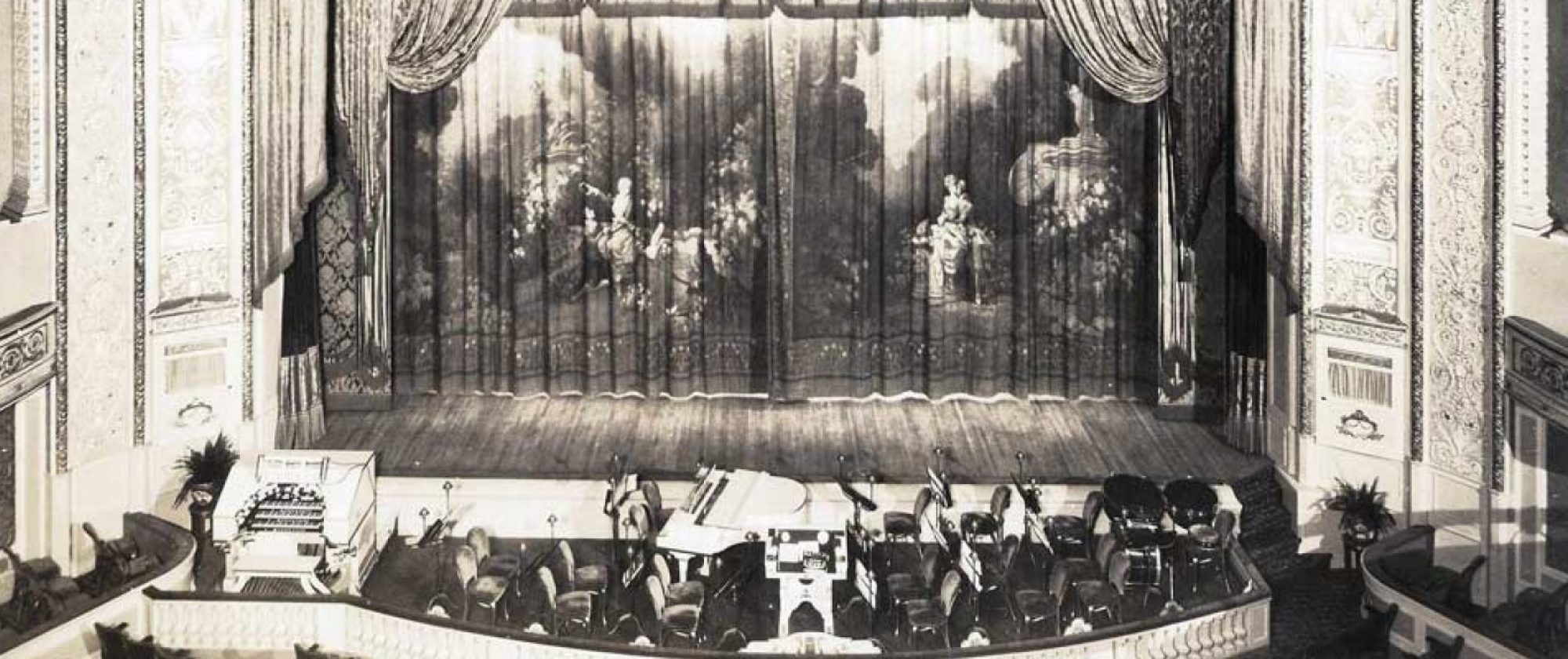Amelia Stone and Armand Kaliss was the headline act and was easily the class of the bill. Their musical novelty, “A Song Romance,” was placed third and did much to set the pace, well carried from that spot on. Kaliss had a clever number with “Ragtime Romance in France,” which probably was added after the act originally opened.
On paper Burt Gordon and Gene Ford were the hit of the bill, and they were in reality. Most of the comedy got access, but it was distinctly noticed that Gordon’s singing lacked the power evidenced usually. So the house acoustics might be the matter. Several weeks ago this team was sent into the Palace after Monday to strengthen the show, and it landed with a wallop. It looks good enough to repeat anywhere.
The name of the act was taken from the principals who are all South Americana with the exception of a nut comedian, solely North American. The act runs quite a little to the dances of the southern countries. The principals are evidently but recently Imported for they do not attempt either talk or songs in English… The comedian is sort of an acrobatic nut comic with some ability and very little material. ‘ He is’ doing all of the usual nut bits, picking here and there from those who have traveled before and not landing any place in particular. He is not altogether to blame for he is out there on his own most of the time, getting very little assistance from the material 01 the other principals. He seems to have ability as a dancer, but only attempts one short routine. Properly placed he might give a good account of himself. The special set gives the surroundings a sort of a southern atmosphere and is fixed up to give the idea of a hotel lobby. There are nine people, six men and three women. A leader may also be carried. The size of the act makes it too big to handle for the small time, especially at this time of the year and the act for the big time is not there. It has all the ear marks of a small time girl act and used as one would do very well as a feature. Monday night at the Broadway the act took several curtains. Most of the applause came from the balcony.
10 Mins, Open One.
The full stage set is used for the rope spinning, and here she does the usual routine with a little chatter. The finish is another song and dance, using the rope in the dance. Miss Walker makes three costume changes and is a pretty picture in the velvet and gold comic opera cowboy costumes. It is all Dallas Walker and neither the singing, dancing or roping that counts. A nice little turn that will get away opening.
14 Mins
Male requests audience to name selection. He places violin on music stand and the instrument plays the requests faithfully. He then descends to orchestra aisle and repeats performance without using bow. A plant is utilized for “comedy” requests and crossfire, also prop laughs. He Is Doc Cook, formerly the “Stooge” in the Joe Cook turn. About a dozen requests are played in the two’ aisle, when he returns to the stage and takes another instrument to duet “Margie” with the mystery instrument.
6 Mins.; Full Stage
Two men in evening clothes, one straight, other comedian, doing “drunk” and taking half a dozen brimming drinks in open glasses from his pockets after violent acrobatic feats. The ground tumbling is made up of simple, familiar feats, neatly enough done, rows of flip- flaps, series of twisters and bark lay-outs. There is a clever bull terrier used in rough and fumble combinations. For the finish they build a two high, with the dog standing on his hind legs upon the cap of the top mounter… The routine Is already under way as the curtain goes up. The audience’s first flash shows the straight man in a hand stand in the middle of the stage (a parlor set here) with the dog trotting figure is between his arms. The advantage of this arrangement is clear for a closing turn, inasmuch as it seizes the attention of the audience which might be started to the exits by the elaborate parade which usually precedes the feature work of most athletic turns, and which usually has no quick movement to arrest attention.
13 Mins.; One
If Gladys Moffatt were not quite so conventional—piano, piano player, colored lamp shade and chair. She opens in a dim light, wearing a hat. The turn is about half over before the audience really knows Miss Moffatt as she is, a very good looking girl with auburn hair and a real charming one in appearance when smiling. Miss Moffatt sings a range of numbers, from pop to rube and yiddish, and has a voice to do it with, besides a certain personality that too infrequently asserts itself. She also holds in on the vocal thing, not pressing her voice, to the disadvantage of the numbers. A ballad and a good one was about the only song for voice extending.
Juggling and slack-wire acrobatics.
